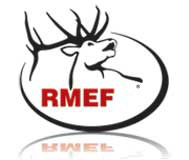MISSOULA, Mont.—The Rocky Mountain Elk Foundation will fund 18 projects that positively affect nearly 6,000 acres of Colorado elk habitat and also assist with research efforts, a wounded veterans’ elk hunt and several hunting heritage outreach gatherings.
 RMEF grants for 2013 total $260,769 and directly affect 19 counties: Alamosa, Archuleta, Boulder, Conejos, Eagle, Fremont, Garfield, Grand, Gunnison, Hinsdale, Jackson, Las Animas, Mesa, Mineral, Park, Pitkin, Rio Grande, Routt and Saguache. Two additional projects have statewide interest.
RMEF grants for 2013 total $260,769 and directly affect 19 counties: Alamosa, Archuleta, Boulder, Conejos, Eagle, Fremont, Garfield, Grand, Gunnison, Hinsdale, Jackson, Las Animas, Mesa, Mineral, Park, Pitkin, Rio Grande, Routt and Saguache. Two additional projects have statewide interest.
“This latest round of grants further solidifies our longstanding commitment to elk and elk country in Colorado,” said David Allen, RMEF president and CEO. “These projects will improve habitat by treating noxious weeds, using prescribed burns and thinning to improve forage, decommissioning old logging roads, and collaring elk to better determine their seasonal movement patterns to assist wildlife managers in dealing with conflict areas.”
From 1985 to 2012, RMEF and its partners completed more than 570 different conservation and hunting heritage outreach projects in Colorado with a combined value of more than $147 million.
“We can’t thank our Colorado volunteers enough. Funds generated for these projects come from their hard work through banquet fundraising and membership drives to ensure the future of elk and elk country in their state,” added Allen.
Allen also thanked RMEF chapters and volunteers nationwide for their dedication to conservation all across elk country.
RMEF grants will help fund the following 2013 projects, listed by county:
Boulder County–Provide sponsorship of four-day camp for at-risk youth by offering conservation education and hands-on hunting heritage activities including how to shoot trap, fish by fly and reel, hike and explore the mountains, shoot a bow and arrow and identify tracks.
Conejos County–Provide funding for a study to place radio collars on 20 elk to determine habitat use, seasonal movements, and population estimates to effectively allocate licenses according to elk distribution. Survey methods will determine potential for application throughout Colorado to assist with management decisions (also affects Alamosa, Archuleta, Mineral and Rio Grande counties).
Eagle County–Burn 1,056 acres to improve forage in the Crystal River and Roaring Fork Valley areas of the White River National Forest. Noxious weed treatment will cover 120 acres. The project is part of a 10-year effort to improve up to 45,600 acres of big game habitat across four major watersheds benefitting elk winter, calving and summer habitat in the Elk Mountains (also affects Pitkin County).
Fremont County–Thin 667 acres of overgrowth and seed 541 acres in the Kerr Gulch and Sand Gulch drainages to promote forage production on public lands for elk, mule deer, turkey, other wildlife, and to alleviate conflicts on nearby agricultural land; and thin 314 acres of woodlands to improve forage conditions for elk and other wildlife and to reduce conflicts on private lands. Work also includes repairs to several guzzlers and installation of a new guzzler to provide water supply to wildlife.
Garfield County–Use of hydro-axe mulching on dense oakbrush to positively affect 600 acres of mountain shrub, sagebrush and pinyon-juniper growth across elk winter and transition ranges in the Wallace Creek and Hells Gulch areas to help maintain elk on the White River National Forest (also affects Mesa County).
Grand County–Work to decommission 20 miles of roads following timber salvage harvest due to mountain pine beetle epidemic to benefit 200 acres of summer, calving and transition range for 450 elk and moose and bear range. Project includes moving a road away from a wetland to improve hunter access to high elevation terrain, and treatment of 258 acres of backcountry noxious weeds in the headwater areas of Arapaho-Roosevelt National Forest.
Gunnison County–Installation of rock structures to retain water in adjacent stream banks, sediment and restore access to the stream’s floodplain on 1,254 acres to increase water table and riparian vegetation to improve elk winter survival; thin and prune 200 acres and burn 500 acres of lodgepole pine, Douglas fir, and ponderosa pine to improve forage for elk range and to reduce conflicts on adjacent private lands within the Upper Gunnison Basin within the Gunnison National Forest (also affects Saguache County); and provide funding to install 10 GPS radio collars on elk to determine habitat use and movement patterns to assist wildlife managers to better deal with conflict areas impacted by development, grazing, hunting and habitat changes over time (also affects Hinsdale and Saguache counties).
Jackson County–Sponsorship to expand the Jackson County 4-H Shooting Sports Program to include air rifles and provide funding to purchase five dozen arrows. Other disciplines currently taught include air pistol, .22 and target rifle, muzzleloader, shotgun, archery and outdoor skills.
Las Animas County–Treatment of 311 acres of deciduous shrubs and trees on public land within the Withers Canyon Wildfire area along the Purgatoire River to improve elk habitat for the Chacuaco elk herd; and thin and remove overgrowth on 400 acres of the Bosque del Oso and Spanish Peaks State Wildlife Areas to open forest canopy and improve forage production.
Park County–Thin 30 acres of conifer encroachment to bolster aspen stands, reduce wildfire potential and entice elk to stay and/or return to managed public lands on the James Mark Jones Wildlife Area.
Routt County–Removal of .78 miles of barbed wire fencing located on wildlife migration corridors on the Medicine Bow-Routt National Forest on Lone Spring Butte just east of Yampa.
Statewide–Sponsorship of second annual Brothers in Arms elk hunt for wounded veterans in the Ragged Mountains near Somerset. Grant funds will help cover the cost of food, supplies and travel expenses. RMEF volunteers will co-host the event; and sponsorship of Country Jam USA Military Day in Grand Junction.
Conservation projects are selected for grants using science-based criteria and a committee of RMEF volunteers and staff along with representatives from partnering agencies and universities. RMEF volunteers and staff select hunting heritage projects for funding.
Partners for 2013 projects in Colorado include the Arapaho and Roosevelt, Grand Mesa, Gunnison, Medicine Bow-Routt, Uncompahgre and White River national forests; Bureau of Land Management, Colorado Parks and Wildlife and other federal, state and local agencies, private landowners, foundations, organizations and universities.
About the Rocky Mountain Elk Foundation:
RMEF is leading a conservation initiative that protected or enhanced habitat on more than 6.3 million acres–an area larger than Yellowstone, Great Smoky Mountains, Grand Canyon, Glacier, Yosemite and Rocky Mountain national parks combined. RMEF also is a strong voice for hunters in access, wildlife management and conservation policy issues. RMEF members, partners and volunteers, working together as Team Elk, are making a difference all across elk country. Join us at http://www.rmef.org or 800-CALL ELK.
Tags: RMEF, Rocky Mountain Elk Foundation
 Originally launched in 2007, customers taking part in the effort donated a cumulative $318,928, including an all-time high of $65,014 a year ago. Bass Pro Shops further supported RMEF by contributing a 50 percent match of all donations, which raised the overall total to $478,392.
Originally launched in 2007, customers taking part in the effort donated a cumulative $318,928, including an all-time high of $65,014 a year ago. Bass Pro Shops further supported RMEF by contributing a 50 percent match of all donations, which raised the overall total to $478,392. 

